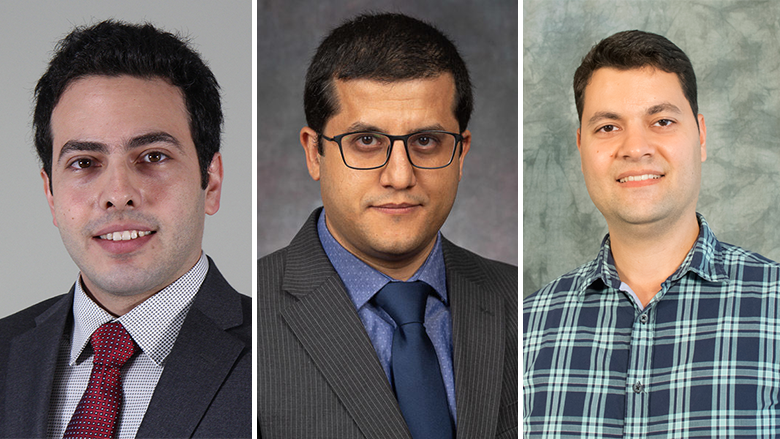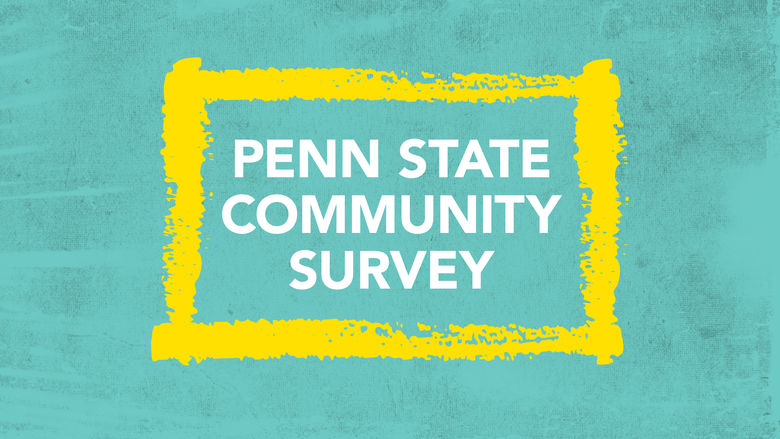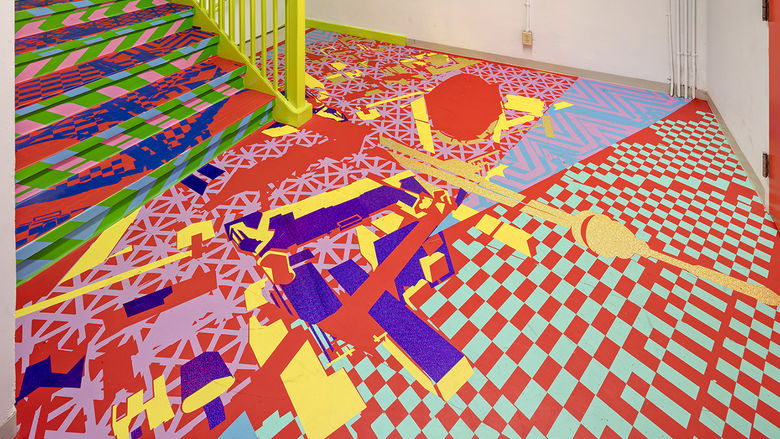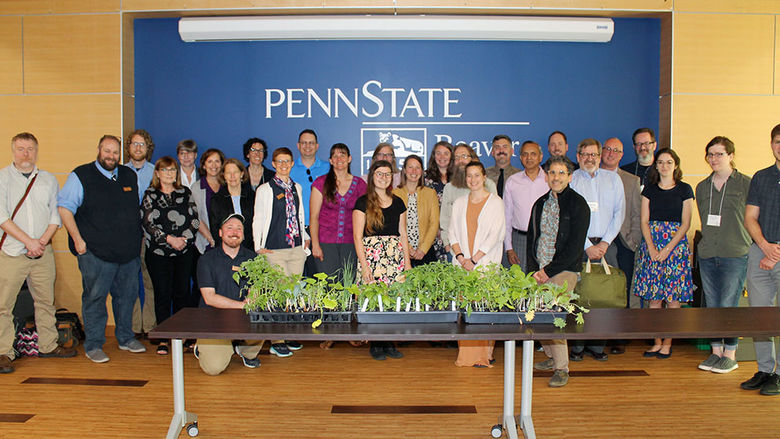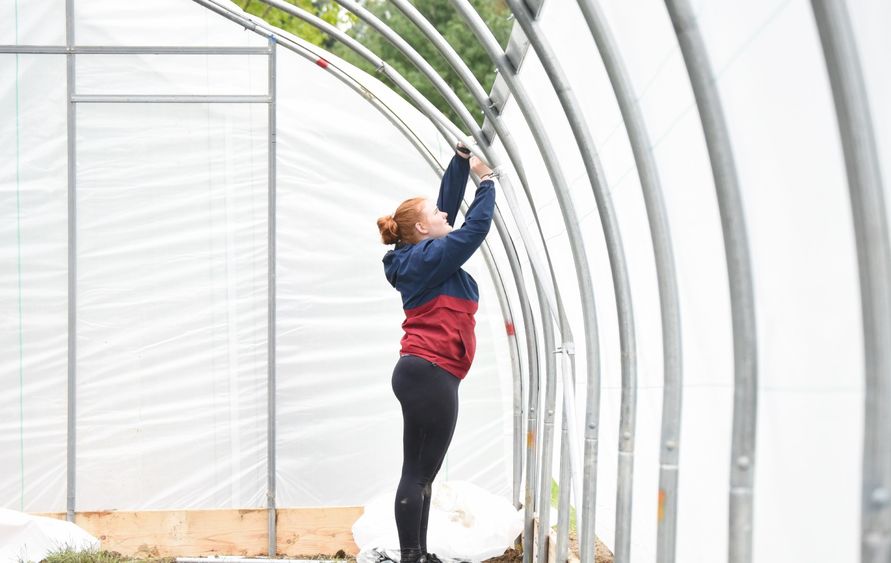
Jenna Seigworth, president of the Student Garden Club at Penn State Behrend, helps to install a high tunnel, which has extended the growing season at Behrend.
ERIE, Pa. — For most Pennsylvanians, gardening season ended a couple of months ago. The last hardy greens were brought in, the last tomatoes picked to ripen indoors, the last parsley chopped over pasta.
But not at Penn State Behrend, where Sustainable Food Systems interns and Student Garden Club members have been gathering eggplant, peppers, carrots, beets, lettuces and tomatoes from inside the 30-by-48-foot poly-walled high tunnel on campus. Though overnight lows outside have brought killing frosts, the high tunnel has kept temperatures inside suitable for several warm-season fruits and vegetables, while protecting the plants from snow, damaging winds and other weather extremes.
“It’s amazing to me how much difference the high tunnel makes,” said Carolyn Hogg, a creative writing major and Sustainable Food Systems intern who will graduate in December. “There’s snow on the ground, and we’re still harvesting peppers and tomatoes. Without the high tunnel, we wouldn’t have these extra months in which people are receiving fresh produce and staying involved in the garden.”
Unlike a greenhouse, which is typically more permanent and reliant on supplemental heating and cooling, a high tunnel — also called a hoop house — defends in-ground crops against severe weather and extends the growing season for regionally suitable crops. The structure is passively heated by the sun and cooled by end vents and roll-up side walls. The sides of the high tunnel at Behrend roll up automatically when temperatures inside get too high, and louvered vents on either end open or close to keep the internal climate consistent.
Despite being sturdy enough to withstand the harsh winter winds and snow of northern climates, a high tunnel is essentially a temporary structure, which can be erected or deconstructed in about a day.
One advantage of the high tunnel is its ability to make the Student Garden at Behrend accessible to more of the campus community, since growing extends into the fall and spring semesters.
“Even as the weather gets colder, members of the Student Garden Club are excited to be outside, getting their hands dirty in the garden beds,” said Jenna Seigworth, president of the club and a Sustainable Food Systems intern. She’s a fourth-year English major, with sociology and sustainability minors.
“Our little community meets in the high tunnel, staying warm despite the Erie chill, tending to food that will be donated,” she said. “The experience has been rejuvenating for everyone involved.”
The high tunnel at Behrend was installed in 2022 by staff from Nifty Hoops, its builder, with help from Sustainable Food Systems interns. The structure and its installation were funded by a Penn State seed grant aimed at expanding the Sustainable Food Systems program to the Beaver and Behrend campuses, in alignment with the University’s strategic plan goal to transform education. Funding from Erie Insurance provided additional infrastructure, including water and power lines and a storage shed.
This summer marked the high tunnel’s first growing season. Hogg, Seigworth and others grew varieties of tomatoes and peppers, along with eggplant, okra, watermelon, beets, carrots and leafy greens. The harvested produce was donated to the Parade Street Fresh Food Farm Stand, a pay-what-you-can model that serves people in an underserved part of Erie for 15 weeks each summer.
“The partnership between the students and farm stand was of great value to the stand and the community,” said Stephanie Thauer, a farmer who co-founded the food stand alongside Stephanie Ciner of Wild Field Urban Farm. “The produce that the students grew in the high tunnel was a significant contribution to what we were able to offer to community members and the length of time we were able to offer produce.”
The success of the farm stand has inspired others to replicate the pay-what-you-can model, including the East Ave. Market, which is operated by the Erie Center for Arts and Technology (ECAT).
“Last fall, we started doing more intentional neighborhood development work by creating the Wayne Health & Wealth Equity District,” said Hannah Moran, who works on communications and special projects at ECAT. “Part of that work includes tackling food systems, and the first step was to replicate the pay-what-you-can market model to suit our neighborhood.
“Produce from Behrend had an immediate impact on our east-side community this summer,” Moran added, “and in the greater scheme of things it is helping us build trust and rapport with our neighbors as we work with them to bring about sustainable change.”
The fall semester also marked the start of a pilot partnership with the Lion’s Pantry at Behrend, which provides free access to food and personal hygiene products. During the project’s first month, 87 of 120 student orders through the Lion’s Pantry included requests for fresh produce. Demand is expected to grow as more students become aware of the fresh-food option, and as the garden site becomes more productive.
“I’m amazed at how much we’ve been able to accomplish over the past couple of years,” Hogg said. “What started as a field of grass is now a place of food growing, learning and community building — especially now that we’re established enough to donate produce. As we become increasingly productive and get more hands involved, I think our work will become even more important, impacting both our Behrend and Erie communities in palpable ways.”
“Growing our operation to the point where we can donate to our community partners has been so meaningful,” Seigworth said. “One of the main goals of the Sustainable Food Systems program has always been to address food insecurity in our community, and growing food to share does just that.”

